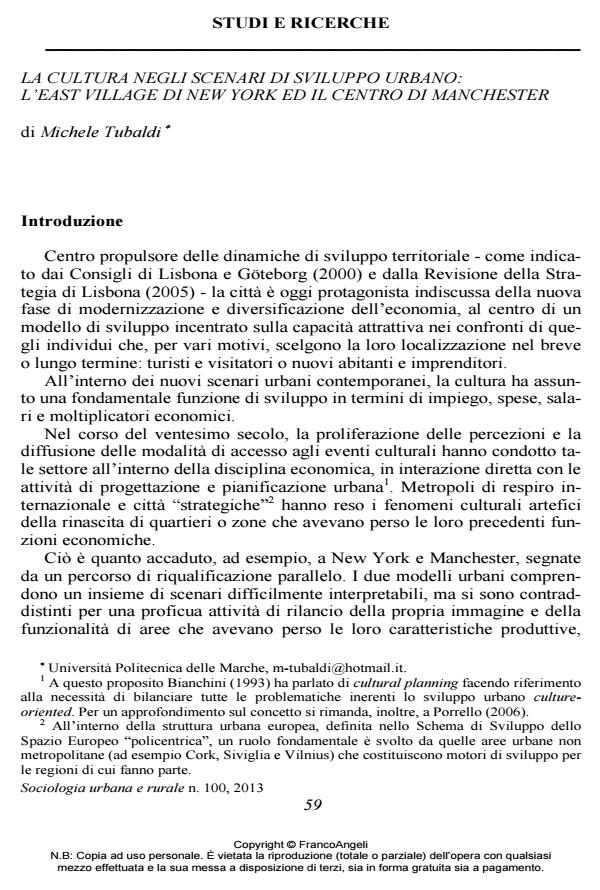La cultura negli scenari di sviluppo urbano: l’East Village di New York ed il centro di Manchester
Titolo Rivista SOCIOLOGIA URBANA E RURALE
Autori/Curatori Michele Tubaldi
Anno di pubblicazione 2013 Fascicolo 2013/100
Lingua Italiano Numero pagine 15 P. 59-73 Dimensione file 224 KB
DOI 10.3280/SUR2013-100005
Il DOI è il codice a barre della proprietà intellettuale: per saperne di più
clicca qui
Qui sotto puoi vedere in anteprima la prima pagina di questo articolo.
Se questo articolo ti interessa, lo puoi acquistare (e scaricare in formato pdf) seguendo le facili indicazioni per acquistare il download credit. Acquista Download Credits per scaricare questo Articolo in formato PDF

FrancoAngeli è membro della Publishers International Linking Association, Inc (PILA)associazione indipendente e non profit per facilitare (attraverso i servizi tecnologici implementati da CrossRef.org) l’accesso degli studiosi ai contenuti digitali nelle pubblicazioni professionali e scientifiche
Il saggio indaga l’influenza della cultura sul territorio urbano, valutando il tipo di impatto economico e sociale che è in grado di attivare su città o quartieri coinvolti in processi di riqualificazione. Vengono presi in esame due modelli di sviluppo - il quartiere East Village di New York ed il centro della città di Manchester - attraverso una valutazione dei dati statistici che ne rivelano la trasformazione socio-economica all’interno dello strumento di analisi del benchmark urbano.
Parole chiave:Cultura, città, sviluppo territoriale, riqualificazione urbana, gentrification, benchmark urbano
Michele Tubaldi, La cultura negli scenari di sviluppo urbano: l’East Village di New York ed il centro di Manchester in "SOCIOLOGIA URBANA E RURALE" 100/2013, pp 59-73, DOI: 10.3280/SUR2013-100005